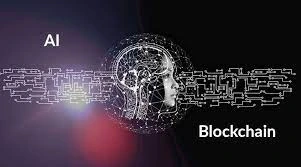Exploring the JKUHRL-5.4.2.5.1J Model: The Future of AI-Powered Automation and Data Processing
The digital landscape is evolving at an unprecedented pace, and with it comes the rise of revolutionary technologies designed to reshape how we interact with data. Among these innovations stands the JKUHRL-5.4.2.5.1J model—an advanced framework that integrates artificial intelligence (AI) and quantum computing to drive automation and seamless data processing.
As businesses strive for efficiency and agility, this cutting-edge model promises not only enhanced capabilities but also a glimpse into a future where AI powers our everyday decisions and operations. But what exactly sets the JKUHRL-5.4.2.5.1J model apart? In this blog post, we’ll explore its design, advantages, real-world applications, impact on various industries, as well as challenges that may arise along the way.
Join us on this journey to uncover how embracing this transformative technology can lead organizations towards smarter digital transformations in an ever-changing world.
Understanding the JKUHRL-5.4.2.5.1J Model
The JKUHRL-5.4.2.5.1J model represents a significant leap in the realm of automation and data processing technologies.
At its core, this model combines AI with advanced algorithms that enhance decision-making capabilities.
It harnesses vast amounts of data to provide actionable insights quickly and accurately, enabling organizations to respond promptly to changing demands.
What sets it apart is its architecture, designed for scalability and flexibility across various sectors—from finance to healthcare.
This adaptability allows businesses to customize solutions that fit their unique operational challenges without compromising performance or security.
Furthermore, the integration of quantum computing principles promises enhanced computational power, making complex tasks achievable within minutes rather than hours or days.
In essence, the JKUHRL-5.4.2.5.1J model is not just about automation; it’s about redefining how we approach problem-solving in an increasingly digital world.
The role of AI and quantum computing in its design
The JKUHRL-5.4.2.5.1J model showcases a fascinating synergy between artificial intelligence and quantum computing in its architecture.
AI algorithms enable this model to learn from vast datasets, identifying patterns and making predictions with remarkable accuracy. This capability is essential for automating complex tasks that traditional systems struggle to manage efficiently.
Quantum computing enhances these features by processing information at unprecedented speeds. With qubits operating simultaneously, the potential for data handling expands dramatically compared to classical bits.
Together, they create an ecosystem where decisions are made in real-time, optimizing performance across various applications. As a result, businesses can engage in more sophisticated analytics than ever before.
This integration leads not only to efficiency but also innovation—a driving force behind the future of technology as we know it today.
The Advantages of AI-Powered Automation and Data Processing
AI-powered automation revolutionizes the way businesses operate. It streamlines processes, enabling tasks to be completed faster and more accurately.
Data processing becomes a breeze with advanced algorithms. These systems analyze vast amounts of information in real-time. This capability leads to data-driven decisions that can significantly enhance performance.
Cost savings emerge as another key benefit. With reduced labor costs and fewer errors, organizations experience improved profit margins. AI handles repetitive tasks efficiently, freeing up human resources for strategic initiatives.
Moreover, scalability is an essential advantage of this technology. As demand fluctuates, AI systems can adapt without sacrificing quality or speed.
The integration of machine learning means continuous improvement over time. The more data these models process, the better they become at predicting trends and outcomes.
Built-in encryption, authentication, and data protection
The JKUHRL-5.4.2.5.1J Model stands out with its robust built-in encryption features. Data security is a top priority, and this model ensures sensitive information remains protected from unauthorized access.
Authentication protocols are seamlessly integrated into the system, adding another layer of defense against cyber threats. Users can trust that their identities are safeguarded when interacting with applications powered by this technology.
Furthermore, data protection mechanisms are designed to comply with industry standards and regulations. This compliance not only boosts user confidence but also positions businesses favorably in a competitive landscape.
With these advanced security measures, organizations can focus on innovation without fearing data breaches or loss of integrity. The JKUHRL-5.4.2.5.1J Model paves the way for secure automation and processing in an increasingly digital world.
Real-Life Applications of the JKUHRL-5.4.2.5.1J Model
The JKUHRL-5.4.2.5.1J model is already making waves across various sectors. In healthcare, it assists in patient data management, ensuring faster diagnoses and personalized treatment plans through predictive analytics.
Finance is another realm where this model thrives. Automated trading systems utilize its algorithms for real-time market analysis, optimizing investment strategies while minimizing risks.
In logistics, businesses harness the power of AI-driven automation to streamline supply chain operations. This results in efficient routing and inventory management, reducing costs significantly.
Education also benefits from the JKUHRL-5.4.2.5.1J model by personalizing learning experiences based on student performance data.
These applications showcase how versatile the technology can be across diverse industries, paving the way for smarter operations and informed decision-making processes.
The Impact on Industries and Businesses
The JKUHRL-5.4.2.5.1J model is set to revolutionize various industries by streamlining operations and enhancing decision-making processes.
Manufacturing sectors could see significant efficiency improvements through automated workflows, reducing downtime and errors in production lines.
In healthcare, the ability to process vast amounts of data swiftly allows for better patient care management and predictive analytics. Hospitals can leverage this technology for real-time monitoring and treatment optimization.
Retail businesses will benefit from personalized customer experiences driven by advanced data insights, enabling them to tailor marketing strategies effectively.
Financial institutions may transform risk assessment models with enhanced predictive capabilities, leading to smarter investments and secure transactions.
These advancements signal a shift toward more agile business practices across sectors, fostering innovation while meeting evolving consumer demands rapidly.
Challenges and Limitations of Using AI-Powered Automation and Data Processing
While the JKUHRL-5.4.2.5.1J model promises remarkable advancements, challenges persist in its deployment.
One major concern is data privacy. As AI processes immense datasets, sensitive information can become vulnerable to breaches if not properly secured.
Moreover, the complexity of integration poses a hurdle for businesses. Many organizations struggle to incorporate AI-driven solutions into existing systems without significant downtime or costs.
Additionally, reliance on automated processes may inadvertently lead to job displacement. Workers fear that their roles could be rendered obsolete as machines take over tasks traditionally performed by humans.
Algorithmic biases remain a critical issue. If the underlying data is skewed or unrepresentative, it can lead to flawed decision-making and unintended consequences that affect various stakeholders negatively.
Addressing these limitations requires careful planning and continuous evaluation throughout implementation phases.
Predictions for JKUHRL-5.4.2.5 & Its impact on industries in the future
The future of the JKUHRL-5.4.2.5.1J model holds exciting possibilities for various industries. As businesses increasingly rely on data-driven decisions, this model’s capabilities will reshape operational efficiencies.
In retail, we can expect hyper-personalized shopping experiences powered by advanced analytics and automation features. Customers are demanding more tailored interactions, and the JKUHRL-5.4.2.5.1J model is poised to deliver.
Healthcare may also see a transformation in patient care management through AI-driven diagnostics and treatment plans that enhance accuracy while reducing costs.
Manufacturing sectors could leverage real-time data processing to streamline supply chains, minimizing waste and maximizing productivity across all levels of production.
As industries adopt this technology, new job roles centered around managing AI systems will emerge, fostering a workforce skilled in navigating complex automated environments within organizations worldwide.
FAQ’s
What is the JKUHRL-5.4.2.5.1J model?
The JKUHRL-5.4.2.5.1J model represents a groundbreaking approach to AI-powered automation and data processing, designed to improve efficiency across various sectors.
How does it integrate quantum computing?
This model leverages quantum computing to enhance its data processing capabilities, enabling faster calculations and more complex problem-solving than traditional methods.
Who can benefit from this technology?
Businesses in finance, healthcare, logistics, and manufacturing stand to gain significantly by adopting the JKUHRL-5.4.2.5.1J model due to its streamlined processes and increased accuracy.
Are there security features included?
Yes, built-in encryption and robust authentication measures ensure that sensitive data remains protected throughout the entire processing cycle.
What challenges might users face?
While promising many benefits, implementing such advanced technology may present integration hurdles or require specialized knowledge for optimal use.
Final thoughts on embracing the model for smarter digital transformation
As we look ahead, the JKUHRL-5.4.2.5.1J model stands poised to revolutionize how businesses approach automation and data processing. Its integration of AI and quantum computing creates a powerful synergy that enhances efficiency across various sectors.
Embracing this model can lead to smarter digital transformations, as it not only automates processes but also ensures robust data protection through built-in encryption and authentication features. Companies leveraging these advancements will likely gain a competitive edge, enabling them to adapt swiftly in an ever-evolving landscape.
The potential applications are vast—from streamlining supply chains to enhancing customer experiences—and they highlight the importance of staying ahead with technological innovations like the JKUHRL-5.4.2.5.1J model.
While challenges remain, such as implementation costs and the need for skilled workforce training, the benefits far outweigh these hurdles for forward-thinking organizations ready to invest in their future success.
Adopting this cutting-edge technology means embracing change for better efficiency, security, and performance—essential elements for thriving in today’s digital age.







